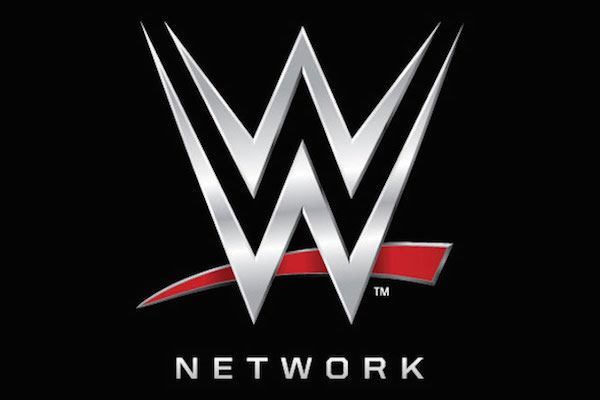
SPOTLIGHTED PODCAST ALERT (YOUR ARTICLE BEGINS A FEW INCHES DOWN)...
WWE’s annual 10-K filing with the SEC covers a lot of ground in the area of WWE Network risks.
The “Risk Factors” of WWE’s 2015 Annual Report leads off with a very detailed and significant list of risks associated with the Network, which has become the core of WWE’s business along with TV Rights Revenue.
Essentially, the risks WWE Network poses to WWE operations is eliminating the long-standing PPV revenue stream in favor of the Network, taking the operations in-house creating additional costs and exposure to liability, and challenges trying to grow the Network subscriber base to reap the benefits of running the Network.
From the 10-K: “The Company has spent, and plans to continue to spend, substantial amounts to produce content, build infrastructure, and market our WWE Network which launched domestically in early 2014 and began to be made available internationally in late 2014. If, for any of a number of reasons, we are unable to continue to develop and monetize this distribution platform successfully, these additional costs, and the loss of very significant revenue, could have a material adverse effect on our operating results.”
Network subscription revenue was $138.8 million in 2015, surpassing the former PPV Revenue category’s previous full-year total of $82.5 million in 2013. This was after going through the ramp-up period in 2014 that produced $69.5 million in Network subscription revenue.
WWE also reached the Network’s break-even point in profitability in 2015. The key, as identified below, is whether Network subscribers will grow at a rate to deliver significant revenue and profitability over the long haul.
During the second-half of 2015, investors were unimpressed by the Network subscriber counts, pointing to a wait-and-see approach to see strong growth in both Network subs and profitability.
Along those lines, WWE identified 14 risks that could adversely affect their ability to operate a successful and profitable Network that investors are looking for.
WWE Network Risks from WWE’s 10-K Filing
– Need to Attract, Retain, and Replace Subscribers. WWE went into great detail on this risk associated with the Network’s operations. WWE identified the Churn factor associated with having a monthly subscription that allows users to cancel anytime, lowering the subscriber count and the Network’s profitability.
WWE said the Churn “may be more pronounced in the periods following larger WWE events shown on WWE Network such as WrestleMania.” However, WWE experienced significant Churn in the non-WrestleMania Fourth Quarter 2015 when they lost more subscribers than they gained.
WWE concluded this risk: “We will need to add new subscribers continually both to replace subscribers who cancel and to grow our business. If too many of our subscribers cancel our service or if we are unable to attract new subscribers in sufficient numbers, our financial outlook, liquidity, business, and operating results would be adversely affected.”
WWE also looked externally to other “subscription digital services” providers who are in the market or have entered the market that might have “vastly greater financial and marketing resources than the Company as well as longer operating histories, large customer bases, and strong brand recognition.” WWE identified these potential competitors as “Amazon, CBS, ESPN, HBO, MLB, Hulu, Netflix, NFL Network, Nickelodeon, Showtime, YouTube, and many others.”
To counteract competitors in the marketplace, WWE said it’s up to them to make the Network a strong product for consumers. From the 10-K: “Our ability to attract and retain subscribers to WWE Network will depend in part on our ability to provide consistent high quality content and a high level of service that is perceived as a good value for the consumer’s entertainment dollars. We face competition with respect to service levels, content offerings, pricing, and related features, which may adversely impact our ability to attract and retain these subscribers.”
– Significant Ongoing Costs. If the first risk is more associated with Revenue produced from Network subs, this second risk is more associated with the Expenses or costs associated with operating the Network service. Since the Network is in-house, there will always be a cost to WWE associated with simply operating the Network and all elements that go with it – staffing, technology, customer service, marketing, etc. Plus, additional costs down the road to keep up with technology.
From the 10-K: “WWE Network has and will continue to require significant capital expenditures, content cost, and operating costs, including marketing costs. … We also intend to continue spending significant amounts on marketing, including promotional offerings to attract, retain, and renew subscribers. Any and all such capital and operating costs, if not more than offset by revenues from WWE Network, could have a material adverse effect on our business and operating results.”
– Emerging Business. WWE noted their uphill battle to get WWE fans to accept a new way of consuming content and the new technologies required to watch the content, especially since WWE “entered the market for subscription digital streaming at a relatively early stage.” WWE said there are risks associated with this aspect of the venture.
- The market is currently not saturated, but it could become saturated. “We could find that the growing number of offerings to consumers could limit subscribers for WWE Network due to market saturation.”
- Also, “other new or more established players, many of whom have greater resources than we, could establish dominant positions in the market for this type of service. “
- Also, “we could find that consumers choose to move away from subscription services generally.”
WWE noted that “under any of these scenarios, our ability to attract and retain subscribers will be adversely affected, which could have a material adverse effect on our business and operating results.”
– Reliance on Partners to Offer WWE Network. Although the Network is essentially in-house, WWE is dependent on the MLB Advanced Media company to “develop and supply technology and infrastructure necessary to deliver our content and interact with the user.”
WWE identified the risk of consumers becoming frustrated with the service if there are regular streaming issues using the technology. Or, if WWE is unable to maintain their relationship with MLBAM as the backbone of the Network.
From the 10-K: “Agreements with our platform providers are typically relatively short-term in duration and our business could be adversely affected if, upon expiration, a partner does not continue to provide access to our service or is unwilling to do so on acceptable terms. Certain platforms, such as Amazon and Apple, offer their owned or licensed content as well as WWE Network and, therefore, may be disincentivized to promote and deliver WWE Network at the same level as provided for their content.”
WWE also noted they have to keep up with the technological shifts in how consumers view content, such as new devices available in the marketplace, and then have the technology to deliver the Network to those devices. Otherwise, WWE said, “our ability to compete successfully could be adversely impacted.”
– Possible Disruption of Systems to be Utilized in Our Operations. WWE noted that interruptions to the Network service could affect subscriptions, whether it’s a computer system or third-party having a service interruption. Or, something much broader such as “weather, natural disasters, terrorist attacks, power loss, or other force majeure type events could make our service unavailable or degraded or could otherwise hinder our ability to deliver content or cause WWE Network to fail completely.”
– Loss of Pay-Per-View Revenue. In 2015, WWE Network surpassed the previous full-year PPV Revenue total from 2013. The number is expected to climb in 2016 and beyond. However, WWE noted there is a risk of subscription numbers do not climb.
From the 10-K: “If, for any number of reasons, our audience does not continue to subscribe to WWE Network in sufficient numbers to offset or exceed the loss of pay-per-view revenue, it could have a material adverse effect on our business and operating results.”
– Technology Enhancements. A sub-topic from above is whether the cost of upgrading/keeping up with technology eats into WWE’s profit, especially if Network subscriptions do not increase.
From the 10-K: “Enhancements and modifications to WWE Network technology from time to time become commercially necessary, and these consume considerable resources in capital and operating expenditures. If we are unable to acquire, maintain, and enhance the technology to manage the streaming of content to our subscribers in a timely, efficient, and user-friendly manner either through an outside party or ourselves, our ability to retain existing subscribers and to add new subscribers may be impaired.”
On the flip side, WWE noted they might have to drop popular search features to the Network if there is a risk to the consumer using their software: “We employ merchandising and search technology in WWE Network in an effort to maintain and increase member engagement with our service. We may experience difficulties in implementing refinements or interfaces that our subscribers enjoy or require, which could cause member dissatisfaction and negatively impact our business.”
– Impact of Government Regulations. This is a broad risk to potential government regulation or changes to how over-the-top streaming services can be offered. WWE noted: “The growth and development of the market for online commerce may lead to more stringent consumer protection laws, which may impose additional burdens on us.”
WWE said this might apply more to international markets where WWE is expanding: “The delivery of WWE Network in international markets exposes us to multiple regulatory frameworks and societal norms, the complexity of which may result in unintentional noncompliance which could adversely affect our business and operating results.”
– Risks relating to the Internet. WWE noted a risk associated with consumption of Internet bandwidth and where WWE fits in the hierarchy among other subscription-based Internet-delivery services.
WWE noted: “To the extent that network operators implement usage based pricing, including meaningful bandwidth caps, or otherwise try to monetize access to their networks by data providers (such as through tiered access or pricing), due to the heavy bandwidth use of audio/visual content, we could incur greater operating expenses and our subscriber acquisition costs, and subscriber numbers could be negatively impacted.
“Most network operators that provide consumers access to the Internet also provide consumers audiovisual programming. As a result, these companies have an incentive to use their network infrastructure in a manner adverse to our success.
“These issues are among those addressed in the FCC’s Open Internet Report and Order discussed above, but to the extent network operators are nonetheless able to provide preferential treatment to their traffic or otherwise implement discriminatory network management practices, WWE Network could be negatively impacted.”
– We are Subject to Intellectual Property Risks. WWE noted that WWE could be sued over trademark/copyrights related to audio/video content on the Network, or the use of Internet platforms to deliver the content. WWE noted they believe they have “managed this process successfully to date,” but any legal claims – whether with or without merit – could result in “costly litigation.”
WWE added: “These types of claims could result in our inability to use technology as currently configured for WWE Network or as we configure it in the future and could significantly impact our operation and monetization of the service. As a result of this type of dispute, we could also be required to develop non-infringing technology, make royalty or damage payments, enter licensing agreements, adjust our merchandising or marketing activities or take other actions to resolve the claims, any of which could be costly or unavailable on acceptable terms.”
– International Offerings. One of the big question marks in 2014 was whether WWE would implement a Network for each international market matching the language of each country. Instead, WWE decided to simply release the standard English-language Network in each country to get the Network in the market and defer language translation costs for down the road.
WWE noted if they want to grow the subscriber base internationally, they might have to go market-by-market introducing a Network version for each region, which would impact costs. WWE noted: “We are not currently offering different content in different countries internationally and we may find that our United States product does not resonate with consumers in other nations. International expansion also entails greater infrastructure and differing legal and regulatory environments… If we are not able to manage the growing complexity of our international operations, our business could be adversely affected.”
– Marketing Efforts may not be Successful. Way down the list of Risks associated with the Network is perhaps the reason why the Network struggled in its first year of operations in 2014 – how to market a new technology to consumers.
WWE noted: “We intend to continue to spend significant amounts on marketing, including promotional offerings, to attract, retain, and renew subscribers domestically and internationally. … If adequate marketing channels are not available or are too costly, for any reason, our ability to attract new subscribers, and/or our operating costs, may be adversely affected.”
– We may be Liable for Fraudulent Payment Transactions. One of the costs of implementing a month-by-month payment system with no obligation is the potential for fraud affecting subscription rates. WWE noted: “From time to time, fraudulent payment methods are used to obtain the service. We do not carry insurance for these fraudulent transactions.” WWE did not say whether they believe this could materially affect their business.
– If we are not able to Manage Change and Growth, our Business could be Adversely Affected. Overall, WWE noted that WWE is expanding their international reach and attempting to grow their streaming service to “enable anticipated growth in both subscribers and features related to our service.”
This growth adds complexity to virtually every aspect of our business, including WWE Network, and if we are not able to manage this growing complexity, including improving, refining, or revising our systems and operational practices, business may be adversely affected.”
Essentially, it’s a new world for WWE and they are confident the Network will grow over time, but they are cautious about the risks of venturing into unchartered water, especially if Network subscriptions do not grow as anticipated or additional costs/expenses/liabilities pop up that they have to handle in-house.




Leave a Reply
You must be logged in to post a comment.